Post Views: 1,764
ViewsSocial Determinates of Health: A Work in Progress
By Ava Sammarco
Navigating healthcare is, indeed, the survival of the fittest. Healthcare providers and consumers must have a keen grasp of the impact social determinants of health (SDoH) have on health and wellness. The focus should be on the 80% of which can be impacted outside of the acute care setting. SDoH truly defines the quality of wellness. Now, this is not a new concept. Clearly, some states are more vulnerable in terms of access to resources that impact social and economic well-being, such as insecurities around housing, food, and transportation. The increased focus is two-fold, the realization of how tightly aligned SDoH are with whole-person care and states requiring providers who participate in shared saving models to assess SDoH as a critical metric of participation. A recent article by Pantell et al., 2020, highlighted the importance of creating a specific subfield of healthcare informatics that “focuses on the application of information technologies to capture and apply social data in conjunction with health data to advance individual and population health.” Pantell described this subfield as social informatics (Pantell, 2020).
What is SDOH? SDoH refers to conditions in which we people are “born, grow, work and live, which help shape the conditions in which one succeeds in life” (Centers for Disease Control and Prevention (CDC), 2020). Reducing healthcare disparities requires dual efforts from an in-depth community assessment and establishing a detailed community-level care plan that cascades to the individual person level. Community assessment of SDOH and developing a whole-person care plan are required to reduce healthcare disparities. Community assessment and plan is the process of evaluating needs at the community level to determine what resources are needed and how both state and federal funds will be managed (Centers for Disease Control and Prevention, 2018).
Assessing SDOH includes two specific tasks:
- Evaluation of socioeconomic risk factors
o Requires the assessment of risk using standardized coding and a standard format to share those findings
- Address Social Needs
o What specific actions and referrals can address the immediate need?
The New Important Identifier
At one point, the social security number was one of the most required identifiers. Although the social security numbers can identify individuals, that number does little to help identify and predict those at risk of social insecurities. The zip code in which one resides has become a more significant number in predicting health outcomes. Much can be learned from the community in which one lives. The CDC has collected data on social vulnerability (SV) at the county level for many years. The CDC defines social vulnerability(SV) as the “resilience of communities when confronted by external stresses on human health, stresses such as natural or human-caused disasters, or disease outbreaks.” (CDC, 2020). The SVI track 15 social measures, including poverty, lack of access to vehicles, and housing density. Although the intent of tracking SVI is about disasters and outbreaks, the themes are the same in terms of what makes communities vulnerable. As more healthcare providers use socioeconomic data in predicting the needs of populations, there is a disconnect between the holistic approach to managing patient needs and the goal of the health system providing services.
At Odds
There is a divide between those providing healthcare services and patient-centered care. Healthcare is a business, and healthcare providers focus on operational efficiency to ensure the organization’s viability. The outcomes to support operational efficiency often do not align with patient-focused outcomes. Healthcare organizations’ outcomes focus includes such measures as the length of stay, readmission rates, hospital-acquired conditions, reportable quality indicators, operating revenue, and staff productivity. On the opposite spectrum, consumer’s needs are much more granular. Patient-centered care should focus on addressing the immediate and long-term health conditions and the impact of those conditions both physically and socioeconomically. What happens when those competing goals collide? Care is often provided for the immediate encounter as opposed to whole person-centered care.
A typical scenario includes patients presenting to acute care facilities with chronic conditions such as diabetes. Patients requiring glucose interventions are admitted, and medications are adjusted, typically using an insulin sliding scale regimen. Once glucose levels are controlled, the patient is discharged on an adjusted medication dose. In reality, the underlying root cause may not be addressed. An assessment of SDoH would provide insight into factors that contribute to the need for glucose intervention. Assessing whether the patient can afford the medication, are there food insecurities that prevent the patient from adhering to the prescribed diet? Unless SDoH is addressed, the readmission cycle will remain constant, and the stigma of “frequent flyers” or “high utilizer” becomes unfairly associated with that person.
Data Builds Insights
I have often heard it takes a village to raise a child. It also takes many organizations working together to make impactful changes in healthcare. Numerous initiatives are working collaboratively to improve how SDoH are used to improve patient outcomes, including:
- The Gravity Project
- Accountable Health Communities Model (AHCM)
- California’s Whole Person Care Pilots
- Social Service Referral Networks
The issue remains that standardized coding does not currently exist for SDoH. Most healthcare providers have some means of documenting SDoH in the electronic medical record (EMR); however, it is challenging to quantify unstructured data and integrating data from multiple sources, which limits the analytics process. Currently, there are over 1,000 codes using ICD 10, SNOMED CT, LOINC, and CPT coding formats that focus on three clinical areas, screening, assessment/diagnosis, and treatment. In an attempt to address the lack of standardized coding, in 2016, the Centers for Medicare and Medicaid (CMS) implemented ICD 10 codes providers could use to classify SDOH. The Codes include problems related to:
- Education and literacy
- Employment status
- Occupational exposure
- Physical environment
- Housing
- Social environment
- Psychosocial circumstances
CMS reported the codes are not widely used, which could be related to inefficient workflows. ICD 10 codes are provider-initiated; however, the collection and assessment of SDOH factors and risk are primarily performed by nurses or case managers who do not assign ICD 10 codes (CMS, 2020). The Z codes also have a narrow focus, such as homelessness. Homelessness represents one group, but many people are not homeless but have housing instability (unable to pay future rent/mortgage) or inadequate housing (lack of plumbing, heat, or air conditioning). Codes must have better specificity to accurately identify the need to match social services.
The Gravity Project
In 2017, a group of stakeholders led by the Social Interventions Research and Evaluation Network (SIREN) concluded the current codes do not adequately represent the data needed to support clinical care, population health management, quality improvement, payment/risk adjustment, and research. In response to the need to capture SDoH in a standard structure manner to improve outcomes, SIREN, received sponsorship from the Robert Wood Johnson Foundation, and initiated the Gravity Project. The Gravity Project: is considered a “social determinants of health coding Collaborative” (SIREN, 2020). The Gravity Project created a community of participants to build consensus around standardized codes used for SDOH and expand interoperability using FHIR to ensure codes can be shared electronically. The domains include Food Insecurity, Housing Instability and Homelessness, Inadequate Housing, Transportation Insecurity, Financial Strain, Social Isolation, Stress, Interpersonal Violence, Education, Employment, and Veteran Status (Siren, 2020). Each domain has three categories with representative vocabularies for each data element:
- Assessment use LOINC, ICD-10-CM (billing), SNOMED-CT (clinical), and/or CPT/HCPCS (billing)
- Interventions use SNOMED-CT and/or CPT/HCPCS
- Outcomes use LOINC
Accountable Health Communities Model (AHCM)
In 2017, the Centers for Medicare and Medicaid (CMS) initiated a project called the Accountable Health Communities Model (AHCM). The goal of the five-year project is to assess the impact of bridging the gap between clinical care and social-economic services that can improve health outcomes and reduce health care costs. The model included 29 organizations with a collaborative focus on working with community agencies to develop a model that promotes health and well-being by collecting SDoH for citizens in their communities and partnership for social service referrals (CMS, 2020). The standard format promoted collaboration through:
- Screening-using a standard tool to screen community for social-economic deficiencies
- Community Referral-educate citizens on current community resources and seek opportunities to develop new services
- Alignment of services-create a path to ensure community services match the needs of the citizens
- Navigation of services to assist those in needs to access identified services
CMS outlined two specific tracks that focused on socioeconomic health-related needs:
- Housing instability
- Food insecurity
- Utility needs
- Violence/abuse
- Transportation needs
Additionally, CMS added additional elements for data collection and analysis:
- Financial strain
- Employment
- Family and community support
- Education
- Physical activity
- Substance use
- Mental Health
- Disabilities
Since CMS’s focus was on those beneficiaries of Medicare and Medicaid, the two tracks included those beneficiaries of federal and state funding. The 29 participating organizations chose between an assistance track that focused on navigation services and the alignment track, focusing on ensuring resources are available and communities are responsive to those needs (CMS, 2020).
Whole Person Care Pilot
The California Department of Health Care Services (DHCS) implemented a Whole Person Care Pilot to address disparities in healthcare around SDOH, which includes:
- Care Coordination
- Navigation of physical and behavioral health services, and
- Referral services to support food, housing, transportation needs
Healthcare providers develop a plan of care for all patients; however, in the acute setting, those plans are more episode-based, not a holistic approach to sick and well care. The state of California has taken the lead on pilot programs that have targeted addressing disparities in healthcare. The Whole Person Care (WPC) pilots focus on coordinating care and service along the continuum, including health conditions, behavior health, and socioeconomic deficiencies that impact health. Technology is a crucial resource to provide access to health data to ensure continuity of care (DHCS, 2019)
Referral Networks
Once the SDoH needs are understood, referral services must be provided to match those needs. Social referral networks bridge clinical and social gaps by connecting those in need with appropriate services through a referral network. Several networking services have taken the next step and created an electronic platform. Unite Us, 211, and Aunt Bertha have formed networks and partnerships to create a seamless referral and outcome tracking system that match the need with the right services in an electronic environment. The ability to electronically request and match referral services reduces wait times. Much progress has been made to create a social safety network (Aunt Bertha, 2020; Unite Us, 2020).
Workflow Challenges
Much work has happened and continues to occur around how to capture SDoH data. AS healthcare providers, there must be open dialogue around workflow, perceptions, and accountability. To improve population health outcomes, states have required managed care organizations to assess and document SDoH as part of the shared savings programs. Several states have been early adopters in progressing initiatives around SDoH. North Carolina is one example of a state that mandated structured data fields to capture SDoH. The initial phase is measuring whether the assessment was completed; future goals are to capture interventions that demonstrate improved outcomes. North Carolina implemented an SDoH program known as NCCare360, which is the first state to implement a coordinated care network to collect and identify social needs electronically, incorporate a referral process that provided a closed-loop feedback process on the outcomes of the assessment and referrals (North Carolina Department of Health and Human Services, 2019).
Moving forward, there must be discussions about accountability and perceptions. As more healthcare providers begin to capture data on SDoH, questions will arise such as who is responsible for the data collection, how often should the assessment be performed, and the potential burden created on both providers and patients with this process. Often, the complexity and frequency of the evaluation become extremely burdensome if made too complex. From a patient’s perspective, we must consider meeting the need to assess vs. asking too often, resulting in patient dissatisfaction. Also, consider how the assessment impacts the patient’s perception of how the data will be used. Will the data be used for good, or unintentionally, as a means to create additional system bias, or shared with regulatory agencies such as the police or immigration? In a time of such civil unrest, the is a heightened lack of trust within populations of color. Providers must ensure to educate the patient on how the data is used and clearly understand the consent process around data sharing.
The Role of Analytics in SDoH
Analytics operates around four different functions, descriptive, diagnostic, predictive, and prescriptive analytics. Organizations must understand what happened, descriptive analytics. Why did it happen, diagnostic? As we look toward the future understanding what might happen (forecasting) is essential in risk stratification. Finally, prescriptive analytics speaks to the ideal, moving away from predicting what will happen based on known data but developing what should happen based on recommending a course of actions (Mehta, 20217). Analytics is being used to identify social and economic needs at the individual and patient level which can be incorporated into the community health plans. The task of federal, state, and local healthcare leaders is to use that data to be more prescriptive in services and funding provided to each community. Using Artificial Intelligence (AI) further supports prescriptive analytics by driving automation of manual processes and establishing detailed algorithms to drive the standard of care, including notifications of care deficiencies/abnormalities and automated referrals to community services. AI is also used to help identify nonstandard codes or text data using natural language processing (NLP) (SAS, 2020).
The work of Gravity, AHC, and Whole Person Pilot are essential in reducing health disparities and reducing the overall cost of healthcare. With a slightly different approach, Gravity is defining standardized coding and interoperability standards that will be used globally to assess and share SDoH. CMS and DHHS are using innovative care delivery models to evaluate and fund organizations to develop community models that could be replicated in many communities.
Conclusion
SDoH is a crucial predictor of future health and wellness. There are many challenges in obtaining data on SDoH, and fortunately, there are many initiatives in progress to reduce those challenges. Depending on where you live predicts the opportunities within that community regarding employment, education, and federal and state funding allocations. Understanding individual specific needs and matching those needs with resources within the community is the first step in closing the gap in healthcare disparities and improved outcomes. The continued focus is to ensure collaborations to promote structured standardizing coding, FHIR interoperability data sharing standards, analytics, and referral networks to provide the needed structure to promote whole-person care.
References:
Aunt Bertha. (2020). Connected Social Care, Open Access. Retrieved from https://company.auntbertha.com/
Center for Disease Control and Prevention. (2018). Community Health Assessment & Health Improvement Planning. Retrieved from: https://www.cdc.gov/publichealthgateway/cha/index.html
Centers for Medicare and Medicaid. (2020). CMS Social determinates of health. Know What Affects Health, 2020. Retrieved from: https://www.cdc.gov/socialdeterminants/index.htm#:~:text=Social%20Determinants%20of%20Health%3A%20Know%20What%20Affects%20Health,-Related%20Pages&text=Conditions%20in%20the%20places%20where,determinants%20of%20health%20(SDOH).
Centers for Medicare and Medicaid. (2020). Accountable Health Communities. Retrieved from https://www.cms.gov/newsroom/fact-sheets/accountable-health-communities-ahc-model-assistance-and-alignment-tracks-participant-selection
Centers for Medicare and Medicaid. (2020). The Accountable Health Communities Health-Related Social Needs Screening Tool. Retrieved from: https://innovation.cms.gov/files/worksheets/ahcm-screeningtool.pdf
Department of Healthcare Services. (2019). $20 Million One-Time Funds for Counties to Initiate Future Whole Person Care. Retrieved from: https://www.dhcs.ca.gov/services/Documents/MCQMD/WPC_Documents/20M-One-Time-Funding-10-18-19.pdf
Health Information Management Systems Society. (2020). The Convergence of Data Analytics and Artificial Intelligence (AI) in Healthcare. Retrieved from: https://www.alteryx.com/sites/default/files/2020-03/whitepaper-himss-research-data-analytics-ai.pdf
Matthew S Pantell, Julia Adler-Milstein, Michael D Wang, Aric A Prather, Nancy E Adler, Laura M Gottlieb, A call for social informatics, Journal of the American Medical Informatics Association, Volume 27, Issue 11, November 2020, Pages 1798–1801, https://doi.org/10.1093/jamia/ocaa175
Mehta. (2017). Four Types of Business Analytics to Know. https://www.analyticsinsight.net/four-types-of-business-analytics-to-know/
Open Data Enterprise. (2019). Leveraging Data on the Social Determinants of Health. Retrieved from: http://reports.opendataenterprise.org/Leveraging-Data-on-SDOH-Summary-Report-FINAL.pdf
Social Interventions and Research Network. (2020). Documenting social determinants of health-related clinical activities using standardized medical vocabularies. Retrieved from: https://sirenetwork.ucsf.edu/tools-resources/resources/documenting-social-determinants-health-related-clinical-activities-using
SAS. (2019). Visual Text Analytics. https://support.sas.com/en/software/visual-text-analytics-support.html
Unite Us. (2020). https://uniteus.com/solutions/
Bio‐ Dr. Lisa M. Lucas, DNP, MBA, MHCM, RN-BC (Informatics), CNE, CPHIMS
Lisa is currently the National Director of Healthcare Informatics at SAS, working primarily on federal and state contracts. Also, serves as Faculty at the University of Mary Washington, teaching graduate-level Healthcare Technology and Informatics.
Most recently, I worked as a Healthcare Executive at Cerner on the Investor Owned and Federal Segment, primarily working with VA and DoD on EHR conversion.
Prior to my role at Cerner, I worked at Mary Washington Healthcare (MWHC) in Fredericksburg, VA, and have held many clinical and leadership positions. With more than 30 years of clinical experience, I have worked as the Administrative Director of Cardiovascular Service Line as well as the Director of Clinical Informatics.
I have a Bachelor of Science degree from George Mason University, dual master’s degrees in Business Administration and Healthcare Management, and a Doctor of Nursing Practice from American Sentinel University in Colorado. I also hold certifications in Nursing informatics, Certified Professional in Health Information Management from HIMSS, Certified Nurse Educator.
7 comments on Social Determinates of Health: A Work in Progress
Leave a Reply
Social Determinates of Health: A Work in Progress
By Nurse Advisor Magazine (Official)
Navigating healthcare is, indeed, the survival of the fittest. Healthcare providers and consumers must have a keen grasp of the impact social determinants of health (SDoH) have on health and wellness.


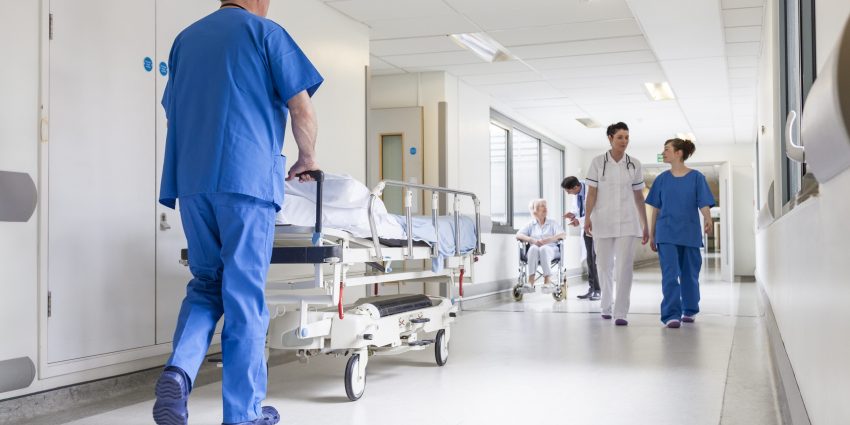




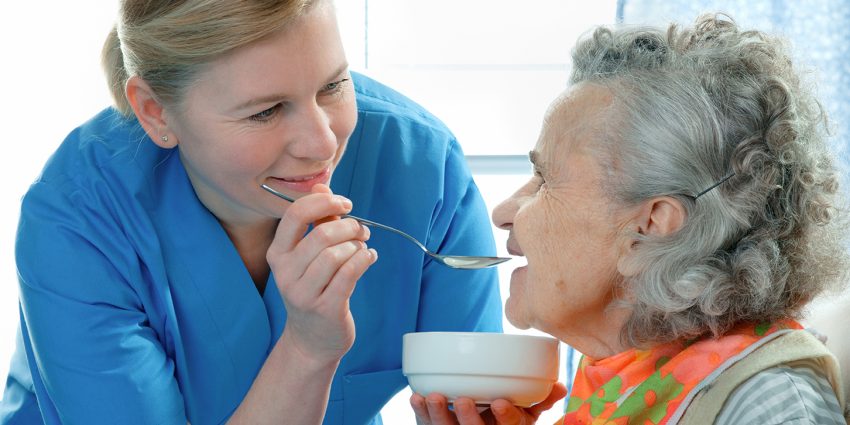

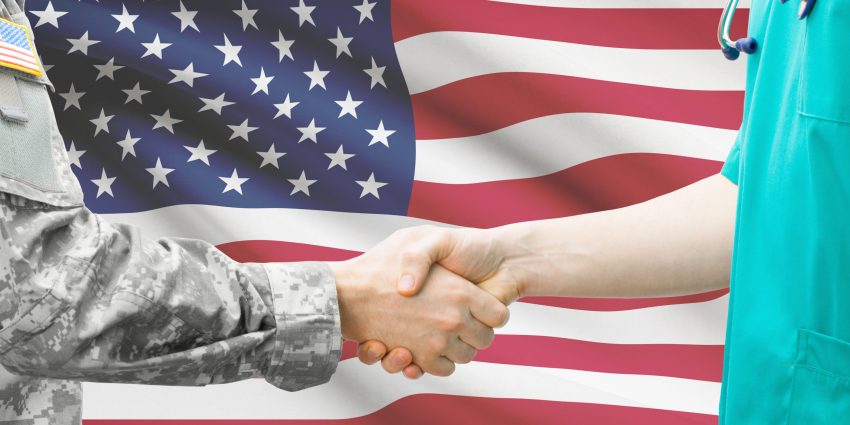


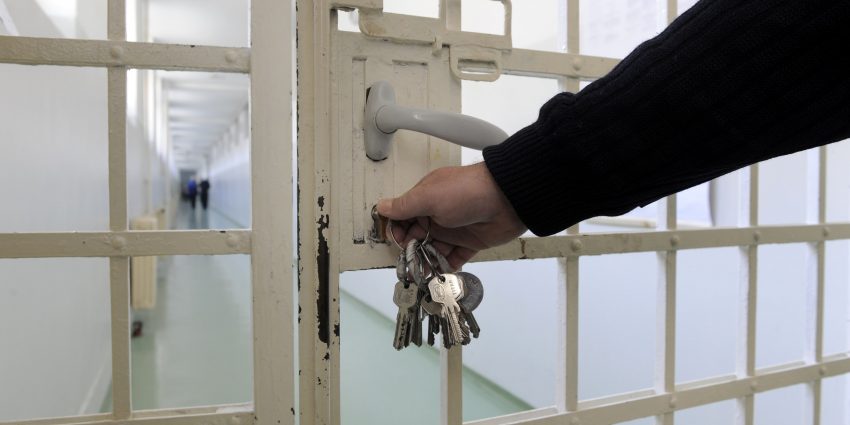
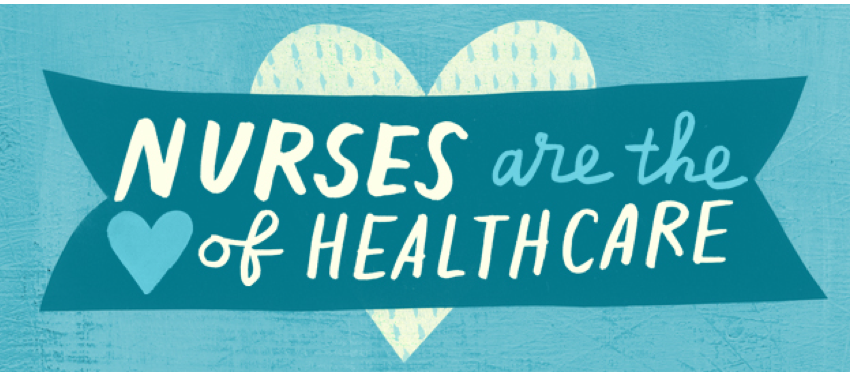
My mom was suffering from Type 2 diabetes and Lupus for over 17yrs. She tried many drugs but at last became dependent on saferoom and metformin due to the weakness and constant pains, She found that life was just sinking & there was no way of hope. Then she consulted Chief Dr Lucky for herbal treatments, Which she had been hearing so much about, After some couple of days taking this herbal medicine, Things started to change, The symptoms started to decrease and after 19 days of taking it, She became healthy and fully free from all the symptoms of Type 2 diabetes and Lupus. My mom’s life is totally different now. That’s why I decided to let everybody know about the wonderful healing of Chief Dr Lucky herbal, If you are having any health challenges kindly visit email chiefdrlucky@gmail.com or WhatsApp +2348132777335
Website chiefdrlucky.com.
I ordered a job spell on a Friday night and on Monday the place I applied for a job called for me to come by their office. They gave me the job I applied for and made me an offer of more per hour than I have ever made in my life! I am so happy! Government jobs sometimes are a slow process. You somehow managed to speed up that process, and I start in just a few days! DR EMU I will be forever grateful thanks once again. You can call on him for help on his email address emutemple@gmail.com or add him up on his WhatsApp +2347012841542. DR EMU also lent a helping hand to the following } 1. GETTING YOUR EX LOVER BACK. 2. WINNING LOTTERIES. 3. CHILD BEARING. 4. BREAKING OF GENERATION COURSE. 5. GETTING OF JOB. 6. JOB PROMOTION. 7. HERBAL CARE. 8. SPIRITUAL PROTECTION. 9. HERBAL CARE. 10. SPIRITUAL PRAYER. E.T.C.
My ex-husband and I had always managed to stay friendly after our divorce in February 2017. But I always wanted to get back together with him, All it took was a visit to this spell casters website last December, because my dream was to start a new year with my husband, and live happily with him.. This spell caster requested a specific love spell for me and my husband, and I accepted it. And this powerful spell caster began to work his magic. And 48 hours after this spell caster worked for me, my husband called me back for us to be together again, and he was remorseful for all his wrong deeds. My spell is working because guess what: My “husband” is back and we are making preparations on how to go to court and withdraw our divorce papers ASAP. This is nothing short of a miracle. Thank you Dr Emu for your powerful spells. Words are not enough.
Email emutemple@gmail.com
Phone/WhatsApp +2347012841542.
My name is ashley walters !!! i am very grateful sharing this great testimonies with you all, The best thing that has ever happened in my life, is how i won the Powerball lottery. I do believe that someday i will win the Powerball lottery. Finally my dreams came through when i contacted Dr. OSE and tell him i needed the lottery winning special numbers cause i have come a long way spending money on ticket just to make sure i win. But i never knew that winning was so easy with the help of Dr. OSE, until the day i meant the spell caster testimony online, which a lot of people has talked about that he is very powerful and has great powers in casting lottery spell, so i decided to give it a try. I emailed Dr. OSE and he did a spell and gave me the winning lottery special numbers 62, and co-incidentally I have be playing this same number for the past 23years without any winning, But believe me when I play the special number 62 this time and the draws were out i was the mega winner because the special 62 matched all five white-ball numbers as well as the Powerball, in the April 4 drawing to win the $70 million jackpot prize…… Dr. OSE, truly you are the best, with Dr. OSE you can will millions of money through lottery. i am a living testimony and so very happy i meant him, and i will forever be grateful to him…… you can Email him for your own winning special lottery numbers now oseremenspelltemple@gmail.com OR WHATSAPP him +2348136482342
http://www.facebook.com/Dr-odion-spell-temple-110513923938220
Only a tiny percentage of professional hackers have the specialized hacking abilities and knowledge needed to recover lost BTC, Facebook hacking and Catching a cheating partner via a Whatsapp link. Finding a reliable hacker like HACKERWEREWOLF is preferable.
A first class hacking hacking team that can aid in the recovery of your misplaced cryptocurrency, lost Facebook account and hacking your partner Whatsapp to know if they are cheating on you.
A hacking organization that can aid in the recovery of your misplaced cryptocurrency, lost Facebook account and to help you gain access to your cheating partner Whatsapp. For a long time, I was very confused and i always felt awful about my partner’s cheating attitude. I really wanted to track and catch him red-handed. I spoke with a trusted colleague of mine at work and she gave me a genuine recommendation about an ethical private investigator named HACKERWEREWOLF.
HACKERWEREWOLF and their extraordinary team emerged as the catalysts of change. Their exceptional knowledge and relentless determination Helped me to see all the lies that my partner have been saying. If you find yourself lost in the depths of lost Bitcoin, facebook and Whatsapp hacking, let HACKERWEREWOLF’s team guide you towards the light of redemption.
Facebook page:Hackerwerewolf
Email:hackerwerewolf637@gmail.com
Whatsapp:+4917617861530
Only a tiny percentage of professional hackers have the specialized hacking abilities and knowledge needed to recover lost BTC, Facebook hacking and Catching a cheating partner via a Whatsapp link. Finding a reliable hacker like HACKERWEREWOLF is preferable.
A first class hacking hacking team that can aid in the recovery of your misplaced cryptocurrency, lost Facebook account and hack your partner Whatsapp. A hacking organization that can aid in the recovery of your misplaced cryptocurrency, lost Facebook account and to help you gain access to your cheating partner Whatsapp. I lost $298k in BTC to bitcoin mining, and HACKERWEREWOLF was able to retrieve it. In my darkest hour, when my Bitcoin was lost and hope seemed but a distant memory, HACKERWEREWOLF and their extraordinary team emerged as the catalysts of change.
Their exceptional knowledge and relentless determination propelled me towards recovery, restoring my faith in the crypto world, Facebook/Whatsapp hacking.
If you find yourself lost in the depths of lost Bitcoin, facebook and Whatsapp hacking, let HACKERWEREWOLF’s team guide you towards the light of redemption.
Facebook page:Hackerwerewolf
Email:hackerwerewolf637@gmail.com
Whatsapp:+4917617861530
HOW MY LOST CRYPTO WAS RECOVERED BY HACKERSTEVE: losing $350,000 in a Bitcoin investment was a devastating blow, but thanks to HackerSteve. I found my hero in the darkest of times. They not only helped me recover my lost funds but also restored my hope and faith in the world of investments. The road to financial recovery may be long, but with wizards like these by our side, we can face any challenge with courage and a pinch of magic. In the midst of my despair after losing a substantial amount of money to a Bitcoin investment scam Hackersteve emerged as my hero. Their relentless efforts and expertise in recovering lost funds helped me regain some semblance of financial stability. I am eternally grateful for their support and guidance throughout the recovery process: hackersteve911 @ gmail . com